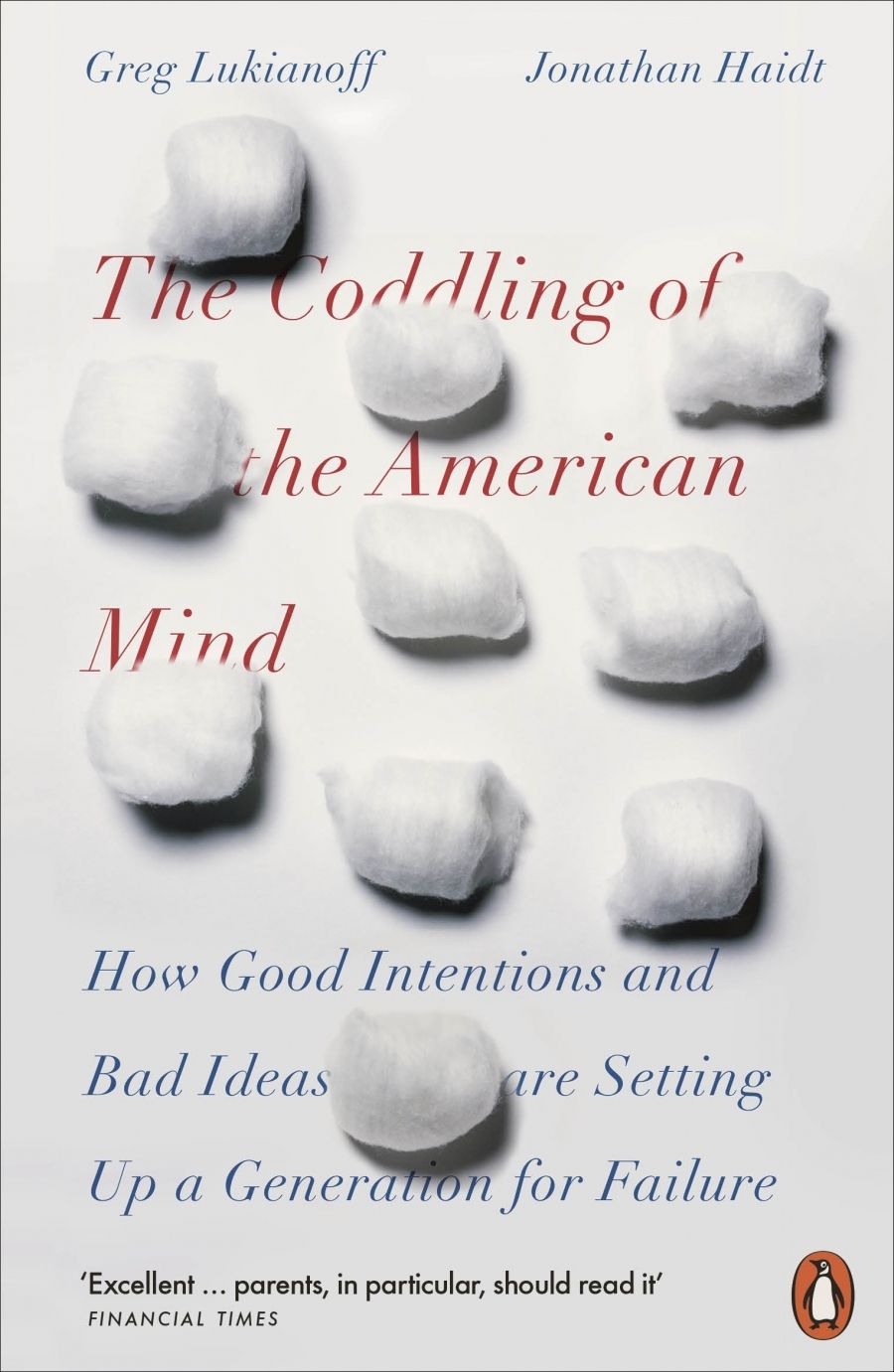
- Free Article: No
- Contents Category: Society
- Review Article: Yes
- Online Only: No
- Custom Highlight Text:
In 1987, Allan Bloom published his best-selling book, The Closing of the American Mind. The American mind must have remained sufficiently open to allow it, three decades hence, to be coddled. The mind that is being closed or coddled is, in the first instance, the young adult ...
- Book 1 Title: The Coddling of the American Mind
- Book 1 Biblio: Allen Lane, $49.99 hb, 352 pp, 9780735224896
The problem and its causes are complex, and Lukianoff and Haidt’s analysis is reasonably nuanced. They provide an accessible explanation of intersectionality and argue it is a useful analytical tool, but contend that there have been poor applications or crude interpretations of it. They do not think identity politics is a wholly bad thing. They think a concern for safety is important, but they are critical of the cult of ‘safetyism’ for failing to discriminate between risks with no social benefit and risks that might provide young people with formative experiences. They observe that there is a difference between banning smoking around children and mandating the wearing of seatbelts, and climbing a tree or walking to school by yourself. Treating all risks as requiring the same level of regulatory concern ensures that young people are ill-equipped to deal with risks they will encounter on their own as adults.
There are, however, aspects of the argument that might have been amplified. The reasons Lukianoff and Haidt identify for the coddling allegedly occurring on college campuses are largely cultural. Economic factors are given less weight in their argument. Lukianoff and Haidt discuss class only in the context of divergences in parenting styles. One idea that they raise in passing, which could have been further explored, is the impact of the student as consumer. They note that, if students are paying a premium price for a college education, such that it has essentially become a luxury good, it is entirely understandable that they would want to control the experience. It is difficult to be overly critical of weak leadership in universities if the society in which these institutions exist has recast the role of people in those positions as service providers, rather than as educators as traditionally understood.
The phenomenon Lukianoff and Haidt analyse in the American context has some resonance in Australia. In November 2018, Federal Education Minister Dan Tehan established a review into freedom of speech in universities, headed by Robert French, a former Chief Justice of the High Court of Australia. This was in response to real or perceived concerns that campus life in Australia was following the American experience.
Whether the problem analysed by Lukianoff and Haidt in fact occurs in Australian universities is open to doubt. Political polarisation is not as pronounced as it appears to be in the United States. The tradition of students living on campus during their degrees is less common in Australia. Campus life altered with the introduction of voluntary student unionism and the expansion of student numbers. The impact of technology, allowing students to study full-time at university, sometimes without setting foot on campus, is transforming higher education. Virtual students likely outnumber activist students in Australian universities.
 Greg Lukianoff (left) and Jonathan Haidt (right)
Greg Lukianoff (left) and Jonathan Haidt (right)
The strength of the book is the analysis of the problem in the American context rather than the solutions. The solutions that Lukianoff and Haidt suggest are somewhat pat. The flavour of their proposed solutions is indicated by the content of the two schedules to the book: cognitive behavioural therapy, and the ‘Chicago principles’ on freedom of speech in universities, developed by the University of Chicago in conjunction with FIRE. A combination of social psychology and constitutional law is one way to analyse the phenomenon this book sets out to examine, although there are other equally good or better methods of doing so.
There is one particularly grating feature of The Coddling of the American Mind. Each chapter ends with a summary, in bullet-point form, of the argument contained in the preceding pages. No chapter is especially long. The authors write clearly. The summary is just needless repetition. Perhaps readers should be trusted to retain the thrust of the argument and not have their minds coddled.


Comments powered by CComment